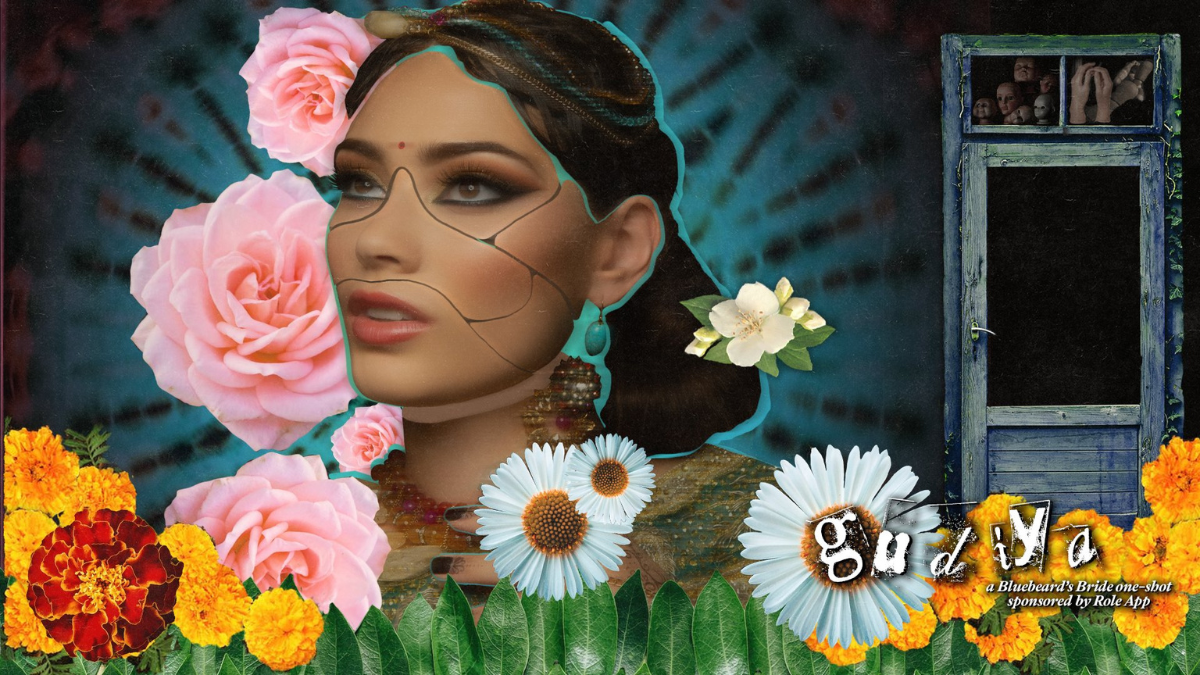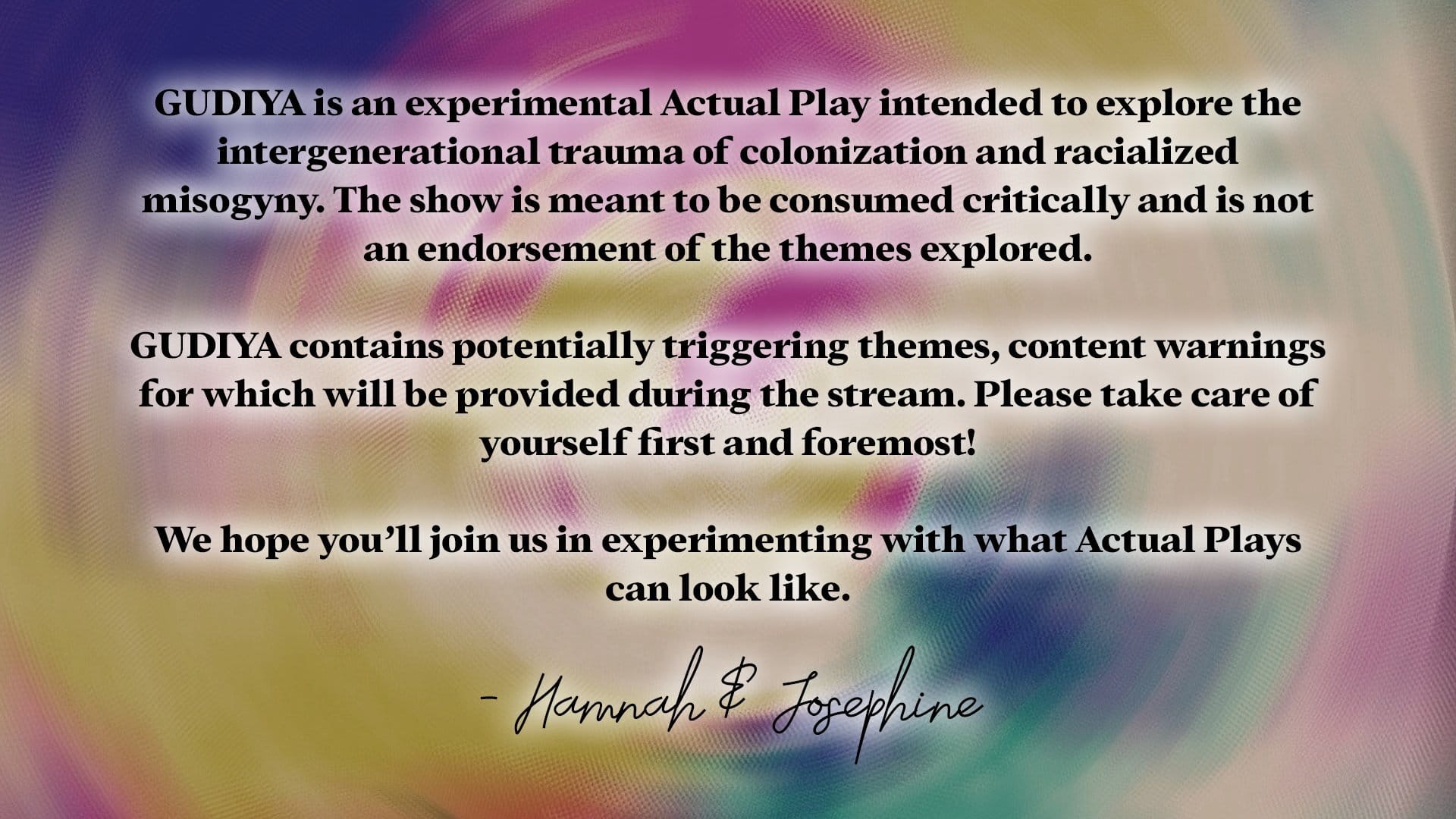GUDIYA: The horrors of being Bluebeard's latest plaything
Using Magpie Games’ Bluebeard’s Bride, this award-winning actual play is the closest I’ve seen to an AP art film (so far)

In Rascal’s first foray into indie actual play criticism, I feel compelled to start with Nameless Domain’s GUDIYA. The Best of the Best at the 2023 New Jersey Webfest, GUDIYA is a work I’ve referenced in nearly every conversation I’ve had about the future of AP. While I have spoken at length to the cast and crew of GUDIYA about their intentions behind the two-hour long psychedelic horror (one shot… feature…special? The language of this medium is still developing and solidifying), I still find new elements to examine and dissect upon each subsequent rewatch.
Using Magpie Games’ Bluebeard’s Bride—designed and written by Whitney Beltrán, Marissa Kelly, and Sarah Doom—this award-winning feature is the closest I’ve seen to an actual play art film (so far). Within the limitations of remote recording and financial possibilities, the cast and crew use every possible audio-visual technique at their disposal to create a thematically pointed, tragically hopeful, queer South Asian retelling of the system’s fairytale origin. In this version of the story, three of the four performers on screen are trans or nonbinary, and all three players are Desi.
While there are still some crunchier elements to the final product (exemplifying what AP scholar Dr. Emily Friedman refers to as the medium’s “ambitious middle”), the subtle production details and the highly intentional performances in GUDIYA are a beacon of what is artistically possible for video-born actual plays.
Led by facilitator (which Bluebeard’s Bride calls the Groundskeeper) Josephine Kim, the cast of GUDIYA embody three facets of the titular Gudiya’s mind—The Mother (played by Noordin Ali Kadir), The Witch (played by RK Wilde) and The Fatale (played by Hamnah Shahid). This mythologically-weighted, three-pronged depiction of femininity must negotiate what they are and are not willing to do to play the role of a “good woman” and a “better wife” to the English noble Lord Bluebeard. Throughout the story, they continually confront which aspects of GUDIYA’s autonomy and culture will be sacrificed as they survive the violent reality of her new life as Bluebeard’s most recent bride.
Much like in the original story, the eponymous lord offers a life of hedonistic luxury to his bride with free reign of his palace, given she does not enter one single room among dozens: his underground chamber, within which she would discover the discarded remains of his previous brides. Using a predetermined framework for any story (like a well-known fairytale) offers a limitation in overarching plot, but allows for highly distilled themes and new lenses to be explored through a larger storytelling tradition.
GUDIYA (the Hindi word for doll) overwhelmingly plays into the horror of not only its source material, but the horror of being both a woman and South Asian in the highly gendered and xenophobic world of the English Empire. To do so in a way that acknowledges the weight of those themes, it begins each of its two installments with a hefty content warning, giving the audience ample time to mentally prepare for the emotional ordeal they are about to endure.

Unlike many actual plays, the performers do not introduce themselves. This follows more in the tradition of contained narrative mediums like film, distancing the personalities of the performers from the characters they will be playing and allowing the story to succeed or fail on its own merits.





